How to save on utility costs: the benefits of heating meters
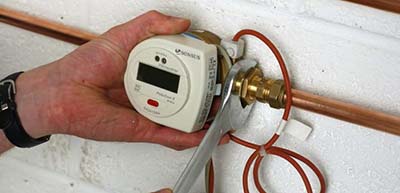
Heating meters make it possible control the expenditure of funds for utilities. They come in several types.
Each has a number of advantages and disadvantages. And for installation you need to assemble a number of documents.
Content
- Advantages of heat and hot water meters
- Types of heat meters for apartment buildings and private houses
- How much electricity do heat meters consume in gigacalories?
- Installing a meter in a building with central heating
- Collection of documents
- Installation
- Equipment registration
- Useful video
- The need for installation: is it profitable or not?
Advantages of heat and hot water meters
- Possibility of controlling the thermal conditions of the room. When it is already warm enough outside and the heating is not turned off, the intensity of heat in the room can be adjusted independently.
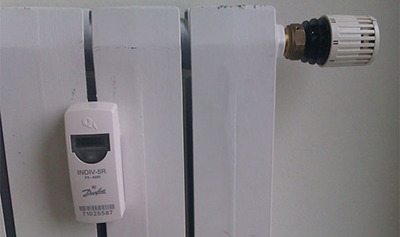
- Saving on utility costs. Thanks to heating meters, payment is made based on the data recorded by these devices, and not according to established standards.
- An incentive to improve living conditions in order to thereby reduce heat consumption.
Types of heat meters for apartment buildings and private houses
Exists several types such devices.
Mechanical
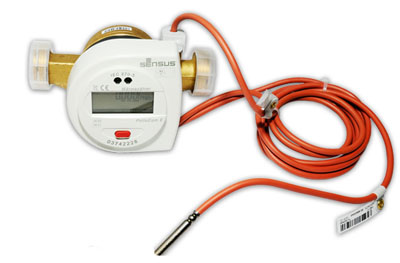
The devices are working based on the principle of a water meter. Inside there is an impeller, which rotates under the pressure of the water flow. Its actions are recorded by the computer.
The advantages of such a counter:
- Low cost.
- Ease of installation.
- Operation for over ten years when this device is installed correctly.
Cons:
- The computing and flow sensors are integrally connected. If you install a counter below 50 cm, then it will be difficult to take readings from him.
- The rotating impeller reduces the strength of the device body.
- In case of a powerful hydraulic shock the device instantly becomes unusable.
Ultrasonic
In them there is no moving element. It is replaced by ultrasound sensors, one of which sends data on the coolant flow rate, and the other receives it. The pulses of the stationary and moving flows differ. The sensor receives this difference as the coolant flow rate value.
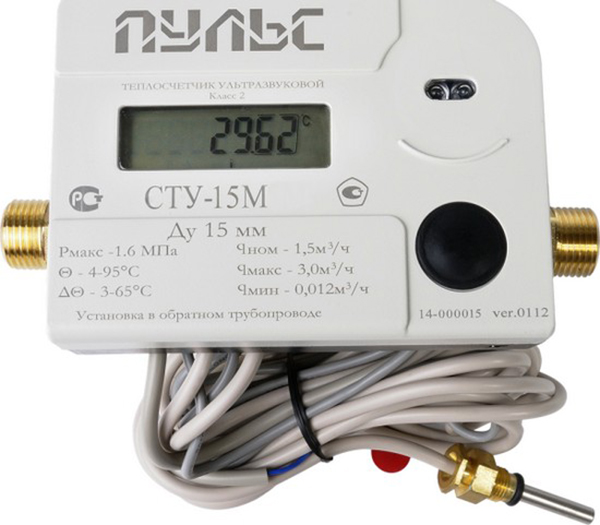
Photo 1. Ultrasonic heating meter Puls STU-15M with high data acquisition accuracy and long service life.
Pros:
- Removable calculator.
- High accuracy of the obtained data.
- Durability and long service life.
Cons:
- Price.
- It is necessary to control the operation of the device during the absence of coolant. The device continues to calculate data, which leads to unexpected expenses for utilities at the standard established rates.
Electromagnetic
At the place where the device is installed, an electromagnetic field is formed in the supply pipe of the heating network. The coolant passing through it causes an electric current, which is registered by sensors at the input and output of the heating system. In this way and the change in temperature is determined.
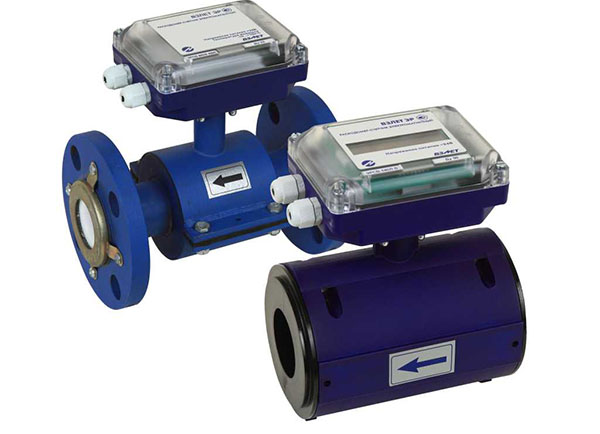
Photo 2. Electromagnetic device Vzlet ER, equipped with a liquid crystal display, accurately determines the consumption of heat and hot water.
The parameters are sent to the calculation unit, which converts them into the amount of heat spent on heating the room.
Pros:
- All received data is displayed in full on the liquid crystal display.
- High accuracy of obtaining data on the amount of heat and water.
- The device can be installed on any section of the pipe.
Cons:
- High cost.
- Increased reaction to the presence of iron elements in water.
- Regular cleaning of the flow meter is essential. If not properly maintained, the device will fail and begin to give incorrect measurements.
Vortex
Their operating principle is as follows: water passes through an obstacle located in the supply line and connected to the meter. At the moment of its contact with the obstacle, eddies are formed. Their parameters indicate consumption coolant for a certain period of time.

Photo 3. Vortex heat meter Ultraheat XS, measures data with maximum accuracy, installation is possible on any section of pipes.
Pros:
- lack of response to water pollution;
- affordable price;
- high accuracy of the obtained measurements;
- installation of the device possible on both horizontal and vertical sections of pipes.
Cons:
- If there are air bubbles in the water, the device may not work properly., giving out false information.
Important! Installation is required special filter before the direct installation of the meter itself.
How much electricity do heat meters consume in gigacalories?
On average, each type of this heat meter spends about 2 W/hour.
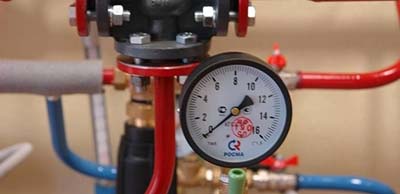
In addition, the device also needs electricity in gigacalories for possible additional functions. For example, data output to an electronic screen.
The passport for a specific product contains information about how much electricity the device consumes.
Installing a meter in a building with central heating
This procedure begins from collecting the necessary documents, and then installation of the device.
Collection of documents
An application-appeal must be written to the company servicing this apartment building with the purpose of obtaining permission to install such a device. Along with this, the following papers are submitted:
- documents for the apartment;
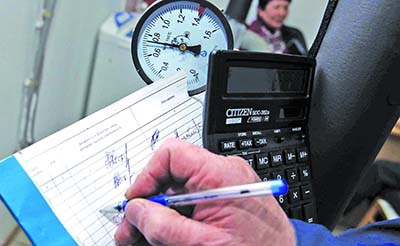
- technical passport of the premises;
- consent of neighbors (on demand).
It is necessary to obtain technical specifications from the organization that provides heat to the building.
They contain the indicators of temperature and pressure of the coolant, the basic requirements that must be followed to connect the metering device.
Reference! All this data allows you to choose a specific model of the device. It is worth searching for and purchasing it through a trusted company that has quality certificates for its products.
A third party company is then brought in to develop it. technical documentation and an individual project. Upon completion of this process, the entire package of papers is agreed upon with the organization that heats the house from central systems.
Installation
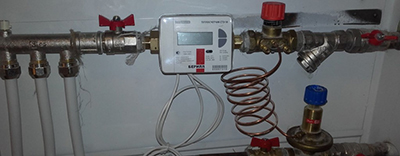
Before installing the meter, you need to high-quality pipeline flushing in order to remove blockages. The device is then fixed to a horizontal or vertical section of the pipe.
If difficulties arise regarding the coincidence of the diameters of the pipe and the meter channel, use adapters. The supply device is positioned correctly if the arrow on it matches the direction of the liquid flow.
To prevent leaks, it is mandatory to use new gaskets and seals.
Attention! When installing the equipment, there should be no water in the heating system, and the shut-off valves should be closed. Before and after the device ball valves are fixed.
Thermal converters are installed according to the principle: one in the measuring cartridge, and the second in the sleeve using heat-conducting paste.
Equipment registration

After the equipment is installed, a contract for installation is drawn up. new tariff for utility services with the heating service.
Also, the housing office representative must seal the meter and sign it. instrument acceptance certificate.
The entire process from the beginning of collecting documents to the end of equipment installation can be entrusted to specialized organizations, licensed for such types of work.
Useful video
The video provides recommendations on choosing a suitable and reliable heat meter.
The need for installation: is it profitable or not?
Installation of heat meters is very profitable in a private house or apartment building. Payment is made according to readings exclusively for warmth, obtained from the battery, without wasting money for loss during transportation.






